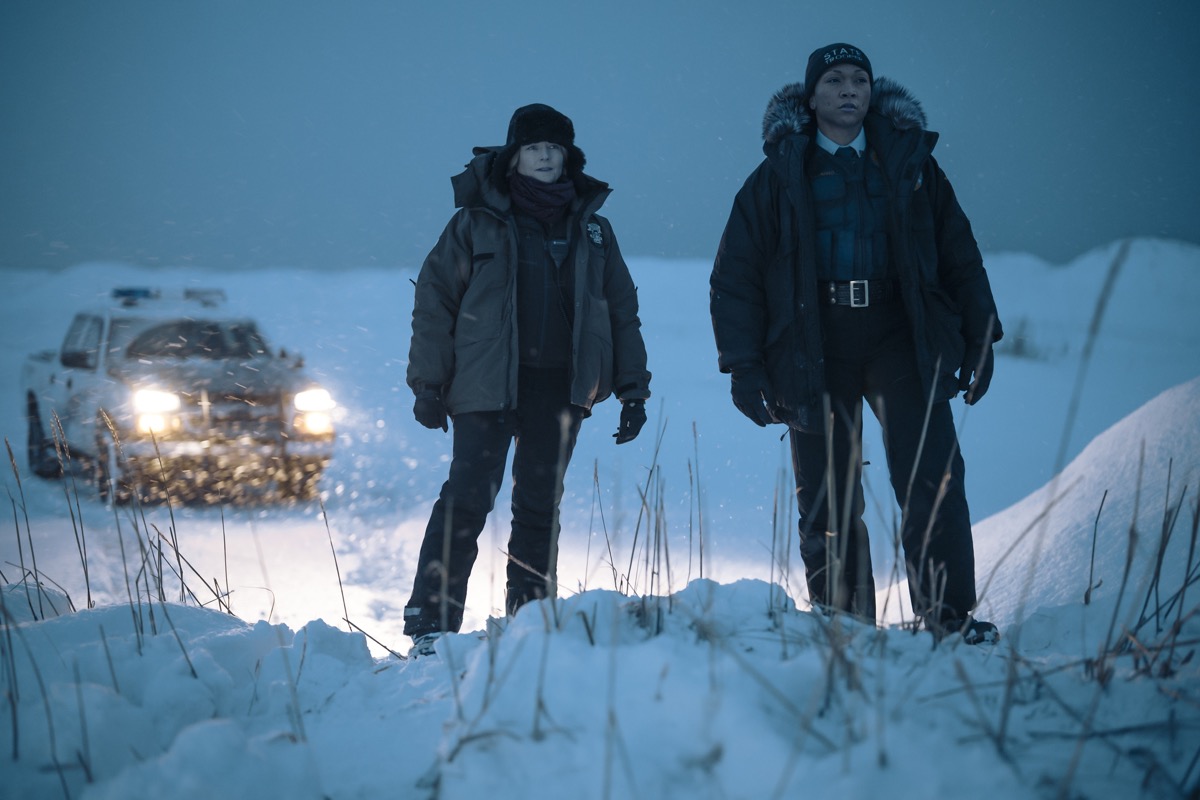The Real-Life Mysteries That Inspired ‘True Detective: Night Country’

True Detective: Night Country focuses on the mysterious disappearance of a research team in a remote Alaskan town. Although what happens in Night Country is fictional, season 4 was inspired by similar real-life mysteries.
Previous seasons of True Detective dabbled in the contrast of spiritual beliefs and our physical reality. Most of the key storylines unfold around realistic kidnappings or murders. True Detective: Night Country already has more of a paranormal vibe to it than the previous seasons. Although the 30 days of darkness just began, characters are already seeing ghosts and discussing the afterlife. The setting adds to the fear of the unknown. It is easy to think a Lovecraftian-type creature may be lying in wait somewhere in the frozen darkness, ready to pounce.
What makes Night Country even creepier is that similar disappearances have happened before. There are several unsolved stories of people—or entire towns of people—vanishing without much of an explanation. Season 4 showrunner Issa López, who also wrote and directed all six episodes, told Vanity Fair that she was inspired by two specific historical mysteries that have “haunted her since childhood.”
The case of the Mary Celeste
In November 1872, the Mary Celeste sailed out of an American harbor on its way to Italy. Captain Benjamin Briggs, along with his wife and two-year-old daughter, led a crew of seven on a fully stocked ship. Less than a month later, the British ship Dei Gratia found the Mary Celeste adrift in the sea. Captain David Morehouse and the crew of the Dei Gratia approached the Mary Celeste and were shocked by what they found. There were no people on board. The cargo hold remained stocked, and most of the personal items brought on the ship also remained. Along with the people, only a small lifeboat appeared to be missing. None of the missing passengers or crew were heard from again.
Although the sails and rigging were in ill repair, most of the ship was in good condition. No one could tell why the crew would abandon a seaworthy ship. The crew of the Dei Gratia brought the Mary Celeste back to port for salvage. The mystery sparked the imaginations of countless people, including author Sir Arthur Conan Doyle, who wrote a fictional version of what he thought might have happened. People have posed theories of both realistic and fanciful nature to explain what happened on the Mary Celeste, but it seems we’ll never know why the crew abandoned the ship to, most likely, die at sea.
The Dyatlov Pass incident
In late January 1959, a group of nine hikers led by Igor Dyatlov set out to traverse a portion of the Ural Mountains in Russia. When the group hadn’t returned after February 12, the expected return date, search parties went looking for them. It wasn’t until May that rescuers found the hikers.
All the hikers had been dead since early February, but the scene was perplexing. From what investigators put together, the hikers cut the tent from the inside to escape and walked in an orderly manner from the tent on the slope into the woods. The hikers wore insufficient clothing for the freezing weather, leaving the warmth of the tent in as little as their underwear and no shoes. Six of the hikers died of hypothermia. The other three were believed to have died from severe internal body trauma, and they wore clothing pilfered from the other hikers. Also, examiners found traces of radiation on one of the bodies.
No one knows exactly why the experienced team would have fled the safety of the tent or what caused the extreme body trauma. Many theories have surfaced over the years, from avalanches mixed with bad weather (the prevailing theory), to secret Soviet weapons testing. Others suggest aliens or some paranormal event.
With only the first episode of Night Country out, it’s hard to say if there will end up being a mundane explanation for the missing researchers, or something more paranormal.
(featured image: HBO)
Have a tip we should know? tips@themarysue.com